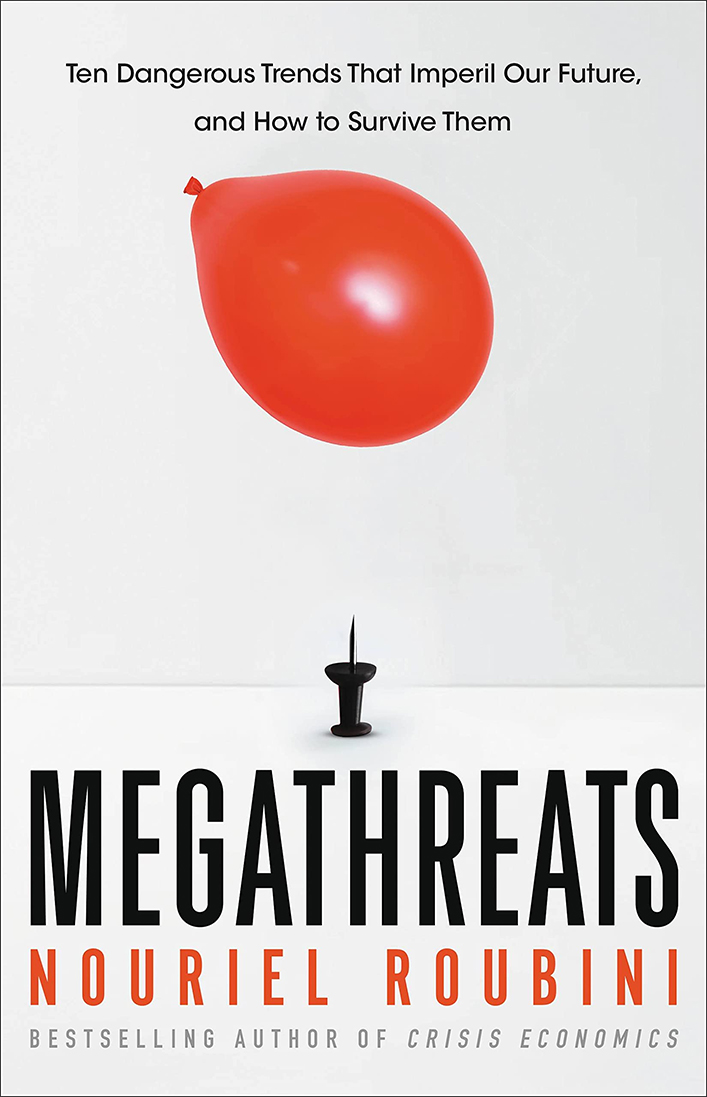By nature, I’m an optimist.
If you’re a farmer, you are too. There’s no way to keep farming after all the challenges and calamities, the droughts, floods, price slumps, cost surges, market shutdowns and other catastrophes that farmers have faced without being an optimist.
Most farmers are “next year country” people in bad times and exceedingly bullish in good times.
That’s why it’s probably a good idea to frequently challenge optimism and bullishness, if that’s your default operating system. Go out and find the most bearish and well-argued pessimistic outlook and see how well your optimism holds up.
To help us with that, Nouriel Roubini, the infamous Dr. Doom, has just fired every cruise missile in his arsenal at visions of the future that aren’t near-apocalyptic. His book, Megathreats: Ten Dangerous Trends that Imperil Our Future and How to Survive Them, is long on the perils aspect and short on the surviving bit.
“The world is facing at least 10 megathreats. Over the next couple of decades, they will lead to a titanic collision of economic, financial, technological, environmental, geopolitical, medical and social forces,” Roubini concludes after horrifying readers for a couple of hundred pages with a nightmare vision of the future.
“Any one of these is formidable. If they converge, the consequences will be devastating…. Megathreats are careening toward us. Their impact will shake our lives and upend the global order in ways no one today has ever experienced. Fasten your seatbelt. It’s going to be a bumpy ride through a very dark night.”
Roubini came to fame during the 2007-09 great financial crisis, when his dark warnings and projections of crisis seemed to have been prescient. His grim outlook did not lighten much post-crisis, with the Arab Spring, the Eurozone crisis, Brexit, the Trump presidency in the United States, and the growing bellicosity of China lending his views credibility, even for those of a rosier disposition. Dr Doom is very doomy, but few dismiss him.
He has vaulted back into high visibility at a particularly worrisome time, with interest rates racing higher in contest with the worst inflation since the 1970s, Russia conducting the first major land war in Europe since the Second World War, and the world trading system seeming to fall apart.
Simply put, in Megathreats Roubini sees a wicked conjunction of financial, economic, social, demographic, geopolitical and environmental risks creating an almost insurmountable wall of risks. What he sees as most likely in the coming years is a situation similar to the days of the 1970s, which were miserable for the advanced world.
“Multiple shocks in the coming decade would not surprise me. Together with loose monetary and fiscal policies and staggering levels of debt, they will precipitate stagflation that could make the ’70s look like a warm-up act,” he says.
I won’t detail the specific threats. Read the book for that — if you can handle a dark, dark read.
Farmers might be tempted to be less alarmed by Roubini’s outlook since the 1970s were a great time for many crop growers. The advanced world might have been suffering from the oil shocks, but many farmers benefited from the grain shocks that happened almost simultaneously, leaving many better off.
This time, the economic stagflation will occur along with climate change and ravaged global markets, Roubini thinks, both of which seem like bearish factors for crop sales and prices.
The thin hope Roubini holds forth as a possible salvation from his apocalyptic expectations is a world in which advanced democracies don’t fall into civil wars and authoritarianism, “friend-shoring” and other connections allow those nations to grow and defend themselves from hostile powers, global markets and trade don’t fall apart, and growth-promoting technologies are shared and spread around the world.
However, he doesn’t see this outcome as likely.
It’s quite a vision of the future, isn’t it? It certainly fits the grey skies, darkness and chill of November. The risks he highlights are certainly there. There’s nothing flaky about this book.
I don’t find it challenges my optimism, though. I appreciate the risks Roubini presents us with, but I can see opposite spins to almost every argument he makes.
We certainly have extreme inflation today and a worrisome surge in interest rates, likely pushing us into a recession, but a 1970s-style stagflation already seems to be getting snuffed out by three-quarter point interest rate increases.

Russia and China are both acting in menacing manners, but the Russian invasion of Ukraine is leading toward a self-inflicted unilateral disarmament of Russia as it gets mauled by Ukrainian resistance, while China’s economy is stumbling and its population beginning a long tumble.
Populism continues to undermine the democratic foundations of many nations, but a number of countries appear to be turning to moderates to lead them out of their plights. The United Kingdom, for example, appears to have a grown-up as prime minister for the first time in a couple of years.
Friend-shoring and the “Freeland Doctrine” are beginning to catch on and providing the democratic nations with a realistic new paradigm with which to replace flawed globalism that allowed powers like Russia and China to ensnare them. The last few years have been a wrenching adjustment of supply chains, but much “resilience” has been built.
The incredible speed with which COVID-19 vaccines were created, produced and distributed bodes well for the potential of science to solve other problems.
Climate change is a more frightening situation, with few signs of abatement, but there too, the future might see a happier outcome than the doom the doctor expects.
Roubini hasn’t convinced me the future will be as awful as he expects, but I’m grateful he gave me a chance to reconsider my optimism. How does your optimism hold up?


















